Is China’s Military Response to Pelosi's Visit Over?
Position Assessment | This paper addresses the potential possibilities of China’s military response to the visit of U.S. Speaker of the House of Representatives Nancy Pelosi to Taiwan. This assessment also examines the seriousness of Washington and Beijing’s statements toward the Taiwan and the role of economic relations in reducing tensions.
by STRATEGIECS Team
- Publisher – STRATEGIECS
- Release Date – Aug 28, 2022
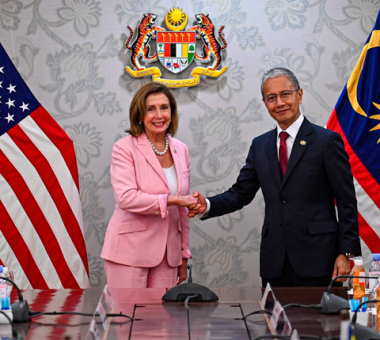
Taiwan Island has long been one of the problematic issues between the United States and China due to the specialty of the relationship between Taiwan and mainland China, which have competed over sovereignty and international recognition in a conflict that began immediately after World War II.
Washington supported Taiwan in a delicate level by signing a bilateral mutual defense agreement in 1955 that lasted until 1980 with the withdrawal of the United States after its recognition of Beijing’s sovereignty and establishing diplomatic relations with China in 1979.
That same year, another decree stated that Beijing’s diplomatic recognition was based on expectations that the future of the Taiwanese issue should be peacefully resolved and that the United States would provide Taiwan with the means to defend itself.
Out of these decrees, what has come to be known as Taiwan’s policy of ambiguity emerged based on the “one country with two different administrative systems” construct, keeping options open to U.S. decision-makers in dealing with this issue.
One of these options is to continue pressing China about Taiwan. This may create a challenge to China in the depth of what it considers as its sovereignty, distracting China’s foreign priorities. The three visits of U.S. delegations to Taiwan in August 2022 come in contexts related to this orientation: U.S. Speaker of the House of Representatives Nancy Pelosi on August 2, a U.S. congressional delegation on August 14, and U.S. Indiana Governor Eric Holcombe on August 21.
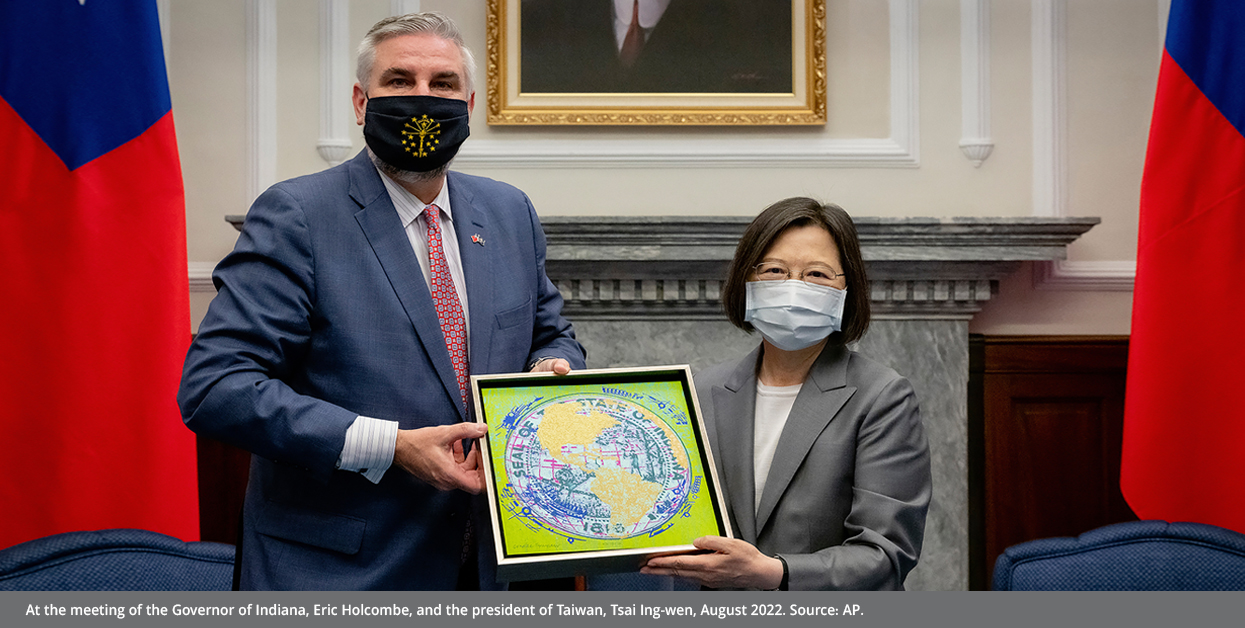
Speaker Pelosi’s visit was not the first of its kind. It was preceded two decades ago by the visit of former U.S. House of Representatives Speaker Newt Gingrich in 1997. However, Polisi’s visit came at a time when there is a multidimensional US-China debate on economic, international, technical, and intellectual issues, some of which are related to the rules governing the international order.
After achieving an economic boom based on a policy of “peaceful ascension,” China became inclined to demonstrate a solid assertiveness policy in what can be described as a shift in Beijing’s pattern of engagement with its foreign policy. Strategiecs’ report, “The Necessary Balance: The Rise of China and U.S. Control,” demonstrated some of this shift’s features.
Comments by the Chinese Defense Ministry regarding Pelosi’s visit confirms this shift, clearly stating that this visit will be followed by a “military” response and warnings of “plunging Taiwan into a deep catastrophe and inflicting serious damage on the island’s population.”
One such response was the unprecedented maneuvers in the Taiwan Strait, where various branches of the Chinese army participated. More than 100 warplanes flew in the area of the military exercises along with the presence of more than 10 destroyers and frigates. According to the Communist Party’s newspaper Global Times, Chinese missiles “landed close to Korean waters for the first time” since 1945.” The live-fire exercises, according to a video published by China’s state-run news agency CGTN, simulated sieging Taiwan and controlling its airspace.
In an era of hybrid wars and shadow intelligence wars, it may seem insignificant to assume that the military response, threatened by China’s Ministry of Defense had come to an end with the end of the exercises.
Potential Steps by China
1. Establishing a breakthrough in military updating plans
The most strategic military response may be to instill determination to move forward with military modernization plans that fall under the supreme strategy of the state, which aims to harness all available and potential resources to serve the vital interests.
At the 19th National Congress of the Chinese Communist Party in October 2017, President Xi Jinping laid out a roadmap for a military vision that aspires to modernize China’s full military capabilities by 2035. As for the long run, the Chinese military will reach the top-tier level by 2050, according to the party’s meetings minutes that did not explicitly address the goal of ranking number one in the world; the language used was vague.
China’s military modernization plans is an interest for the defense research monitoring and evaluation departments in Washington, such as the RAND Corporation, which permanently allocates space to the Chinese file. In its 2020 report, “China’s Grand Strategy: Trends, Trajectories, and Long-Term Competition,” RAND foresaw four scenarios for China’s national power in 2050: victory (global leadership), rise (strengthening its current capabilities), recession, and internal collapse.
The article describes the extreme scenarios of victory and collapse, and suggested their oscillation between ascent and recession. However, what is most striking is its warning regarding the seriousness of China’s military modernization and that—in only its the third decade—the Chinese military will have integrated military capabilities that are able to compete with all aspects of war in vast territories. RAND, therefore, recommends that the U.S. military and its allies should prepare for immediate deployment in response to any crises.
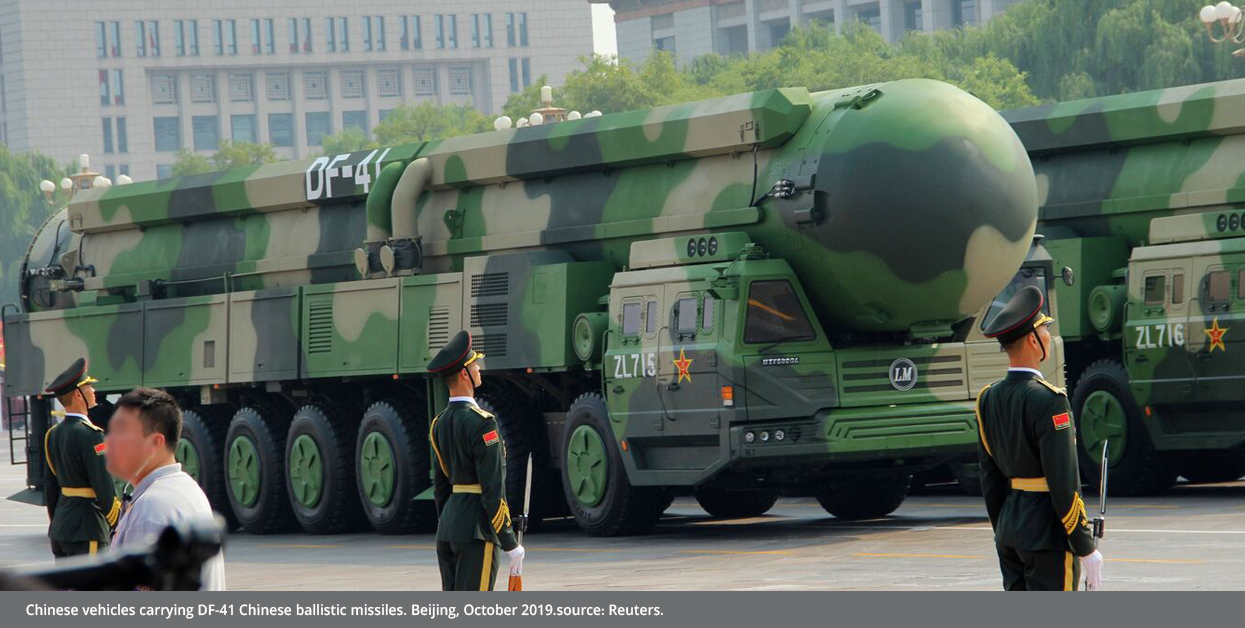
2. Compulsory annexation of Taiwan
One such crisis is a sudden move by China’s amphibious power and the creation of a bridgehead on a patch of Taiwan’s coast in preparation for a large-scale invasion and subjugation of the island to Beijing’s authority. This move would terminate the agreements signed since 1979 that stipulate enhancing the principle of "one state with two administrative systems," which could entail a U.S. response.
Some may argue that the lack of direct U.S. military involvement in the Ukraine crisis is encouraging China’s intentions to annex Taiwan. Nevertheless, it is misleading to compare the two cases as the Chinese army, if it takes such a step, would be unprecedented in its history. Unless this unprecedented step is faced with a firm U.S. response, Beijing will join other countries lenient in violating the fundamentals of the international order, which threatens Washington’s ability to control and undertake international leadership functions wherever its supreme interests call for.
However, it appears that there are some doubts in Washington about China’s ability to annex Taiwan by force. In two reports published in August 2022, Warrior Maven, which tracks U.S. military deployment in addition to future weapons and cyber warfare, concluded that China’s control over Taiwan for purely operational reasons is unlikely to happen.
Nonetheless, factors in favor of Chinese power, such as geographic proximity and amphibious capabilities, allow crossing the 100 miles that separate mainland China and the island of Taiwan. The speed of U.S. monitoring and response is crucial in thwarting a potential Chinese intervention while in its early stages. The U.S. forces rely on clear air superiority, backed by fifth-generation F-35 aircraft capable of operating in an interconnected organized network. China, on the other hand, has a limited number of J-20s.
Washington can overcome its geographic distance from the theater of operations through its bases in allied territory and its aircraft carriers, five of which are stationed with the Indo-Pacific Command.
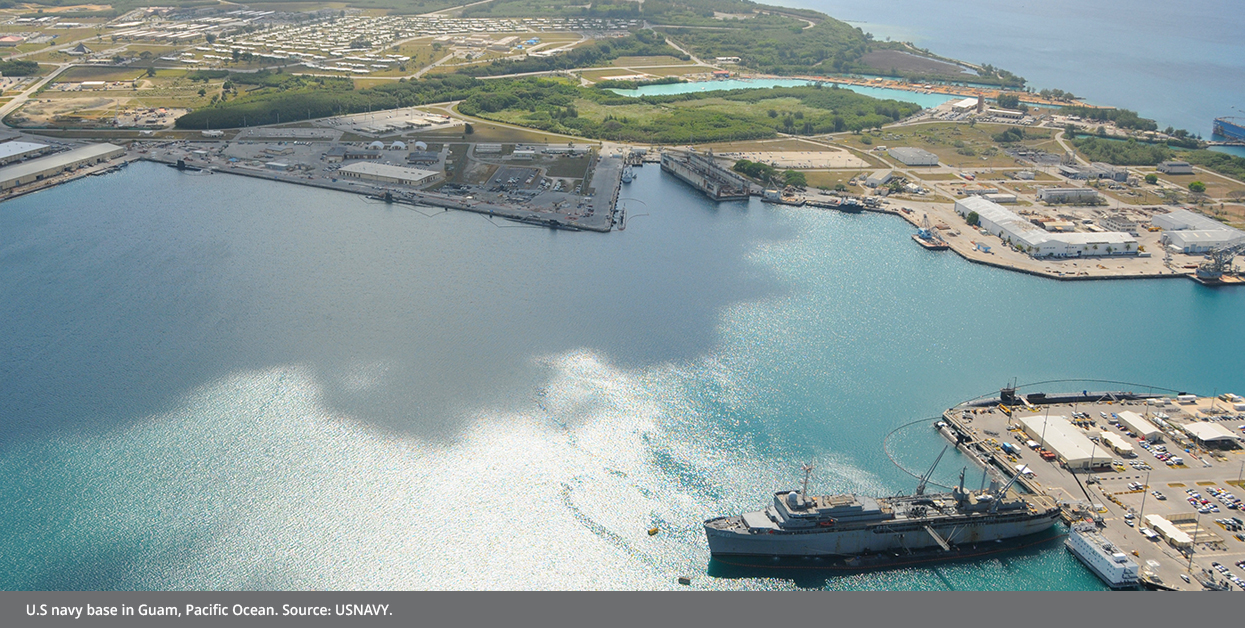
The United States also has battlefield-proven capabilities logistics with 625 air-to-air refueling aircraft, while China has only three. China plans to manufacture more such aircrafts in its modernization project, but until then, the U.S. military has the advantage of continuous long-distance flights.
The most specific factor in the calculations of the balance of power lies with high-tech naval capabilities able to go stealth, performing electronic warfare tasks and capable of coordination integrated with other types of armies, like drones and aircraft carriers. The U.S. military thinking about Taiwan is dominated by the importance of ensuring air superiority through sea-launched air superiority.
According to Global FirePower’s index of 142 nations, Taiwan is ranked 21st—ahead of Ukraine (22nd) and Canada (23rd)—due to its surface-to-air defense systems capable of countering ballistic missiles and locally developed system to counter maneuvering fighters.
Although Washington terminated its Mutual Defense Agreement with Taiwan, it continued to support it militarily. This support is not subject to partisan discord, which is evident in the results of the vote of lawmakers on laws supporting Taiwan.
The latest of such laws is the Senate Foreign Relations Committee’s introduction of a massive 107-page package dubbed "Taiwan Policy 2022." The Taiwan Policy includes the provision of qualitative support, military training mechanisms, funding of a war reserve arsenal, and increased joint coordination between the two powers’ influential capabilities to achieve military victory.
What is stated in this clause may seem counterlogical and opposite of the rational foundations of deterrence. However, history indicates that international crises often erupted in a moment of relaxation and recognition of the continuity of the status quo. This requires careful attention to the sources of potential crises, even if there is no evidence that they are probable.
In fact, the Chinese invasion of Taiwan is not impossible. U.S. Joint Chiefs of Staff Chairman Mark Milley testified before Congress about statements attributed to Chinese President Xi Jinping, in which Jinping urged the Chinese military to celebrate the end of the military modernization program in 2027 instead of 2035, in addition to developing capabilities to annex Taiwan. Milley considered this a part of the talk about the acquisition of capabilities, not necessarily the intention and determination to annex Taiwan.
That the Chinese government’s annexation of Taiwan is not impossible is also evidenced by the Chinese government’s Taiwan Affairs Bureau stating in an August 2022 publication that it "will do our utmost to achieve peaceful reunification. But we will not abandon the use of force, and will retain the option to take all necessary measures." The publication, a white paper, is the first the bureau has released since 2000, according to Reuters.
3. Military Support to Russia
Politically speaking, Beijing’s position on the Ukraine crisis ranges from neutrality to statements that understand the security imperatives of Russia’s position. Militarily speaking, there are no features of any support by China for Russia.
Thomas Friedman, a columnist for The New York Times, warned that Pelosi’s visit could undermine the "sensitive" negotiations conducted by the White House to prevent China from assisting Russia militarily in the Ukraine crisis.
An assessment of the cohesion of Sino-Russian relations shows that it lacks the durability of the defense dimension. The two countries are not bound by a mutual defense agreement or declared protocols for the exchange of dual-use civilian and military technologies.
On the background of the common threat of the Ukraine crisis, Taiwan, and other issues, China may overlook the disincentives of establishing defense ties with Russia as part of the response to Pelosi’s visit.
4. To Militarily Support U.S. Adversaries
The impression the West perceived of North Korea’s potential behavior is a distracting factor for U.S. priorities in dealing with China and Russia on the international stage. Ostensibly, there is a bet that Russia and China are using North Korea as a "distraction strategy," according to a February 2022 article in Foreign Affairs magazine.
In South America, there are potential countries with which China will have close ties, especially those with a left-wing socialist political culture. This region is no less important than the Indo-Pacific area in the calculations of U.S. national security. From a regional perspective, it can even be assumed that South America is more influential in interests and threats due to its geographical proximity. Washington remains committed to the Monroe Doctrine adopted in 1823, with constant modifications to its enforcement mechanisms to safeguard its regional security.
Throughout the world arena, and in various regions, there are hotspots that are hostile to American orientations and defiant of its influence. These hotbeds are meeting today politically, and perhaps economically, with Beijing. It is possible that in the next stage the Chinese response to Pelosi’s visit will include establishing hybrid military ties in which the United States is as opposed as the United States does in the Asian surroundings.
5. Creating a New Reality Around the Taiwan Strait
Regardless of Beijing’s gains from a compulsory unification, the costs could be semi-existential and overthrow its development and international legitimacy as a party that respects international law and opposes the use of military force for non-defensive purposes.
Consequently, in a later context, China may resort to create a "new ordinary situation" based on further militarization and maneuvers that threaten the continuity of the navigation flow through the overcrowded Taiwan Strait. According to a report published by Bloomberg in early August 2022, nearly half of the world’s shipping fleets and 88% of the larger ships crossed the Strait since the beginning of this year.
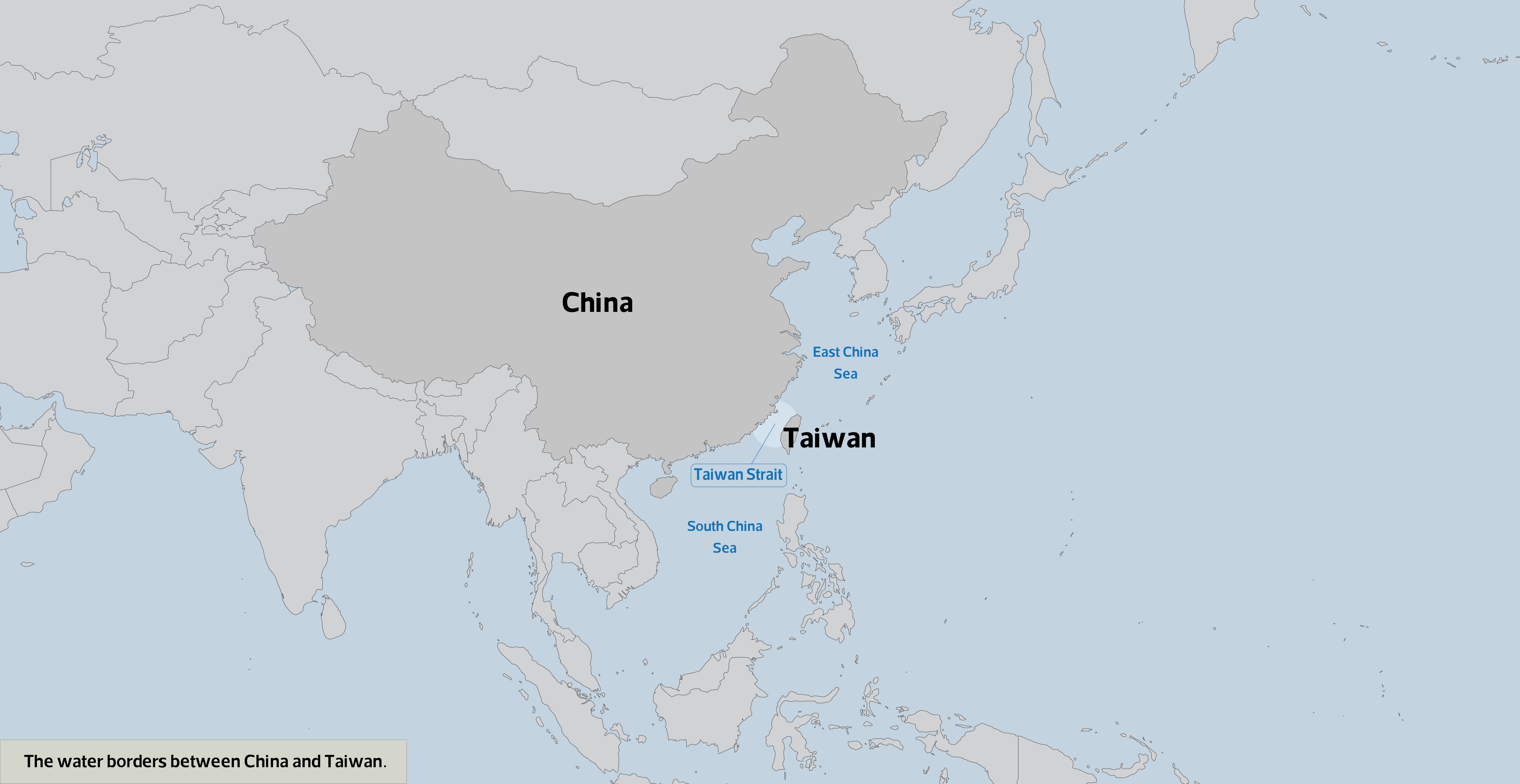
6. The Water Borders Between China and Taiwan
The live ammunition used in China’s drills during Pelosi’s visit disrupted navigation one of the rare times such exercises were carried out around a sea strait and almost the first time in the history of Chinese military exercises around Taiwan Strait.
These drills are expected to increase as an expression of the solidity of the Chinese position and the seriousness of its threats. If so, the Chinese Navy crossing the midline in the Strait would become a new norm added to the multiple violations of Taiwanese airspace. In 2021 Chinese aircraft violated the identification zone of Taiwanese airspace 969 times, more than double the times in 2020, according to Defense News magazine.
Given the importance of the Taiwan Strait, the violation of global freedom of navigation is as difficult to ignore as the violations of Taiwanese airspace. However, the scenario of tightening navigation remains more realistic and less costly for China’s economy, security, and international security as a whole than a scenario of military invasion.
A tightening scenario would also weaken Taiwan’s economy and thwart Taiwanese separatist intentions. Strict tightening, similar to a sea blockade, is unlikely given the economic overlap.
Economic Overlap and Tensions Reducing
Despite its geopolitical reality, Taiwan’s GDP reached $675 billion in 2021, making Taiwan 0.6% of the global economy. Given its population of 24 million, these economic figures reflect Taiwan's advanced position, particularly in the technological industries.
Taiwan plays a crucial role in the current technological boom, with its electronic chips, or semiconductors. According to the TrendForce, which provides advanced consultancy and research in high-tech markets, the market share of Taiwanese chip manufacturers in 2021 was equivalent to 65% of the global total. The Taiwan Semiconductor Manufacturing Company (TSMC) alone accounted for 55% of the global share. TSMC’s market capitalization, according to the stock exchange trading figures on August 11, 2022, is about $515 billion.
During her visit Pelosi met with TSMC President Mark Lee with the aim of attracting more of its activity towards the U.S. market and to obstruct the company’s supply to China. It is reported that the sanctions imposed by the Trump administration on China’s Huawei Technologies corporation aimed at severing its relationship with TSMC, which Huawei relied on to produce the superconductors needed for the infrastructure work of fifth-generation networks of the internet.
This is part of a U.S. trend to maintain the global leadership gap in several sensitive areas, particularly leadership, innovation, and infrastructure. The U.S. Congress approved a trillion-dollar package for this purpose, of which $52 billion was allocated to the Chips and Science Act through which the U.S. government supports the semiconductor industry domestically in exchange for the pledge of companies benefiting from this support to not supply advanced chips to Chinese customers.
In this geopolitical climate and technological competition, TSMC is working on the construction of $12 billion plant to produce 5 nm chips in Arizona that will produce 20,000 chips per month by the start of actual work in 2024.
In practice, it is very difficult to isolate China from all imports of electronic chips since its production requires raw materials of rare earth metals (REE). China has the world’s largest reserves, estimated to be 44 million metric tons, while the United States comes in eighth place globally with only 1.8 million metric tons. The following figure shows that most of the declared reserves are concentrated in China and Russia.
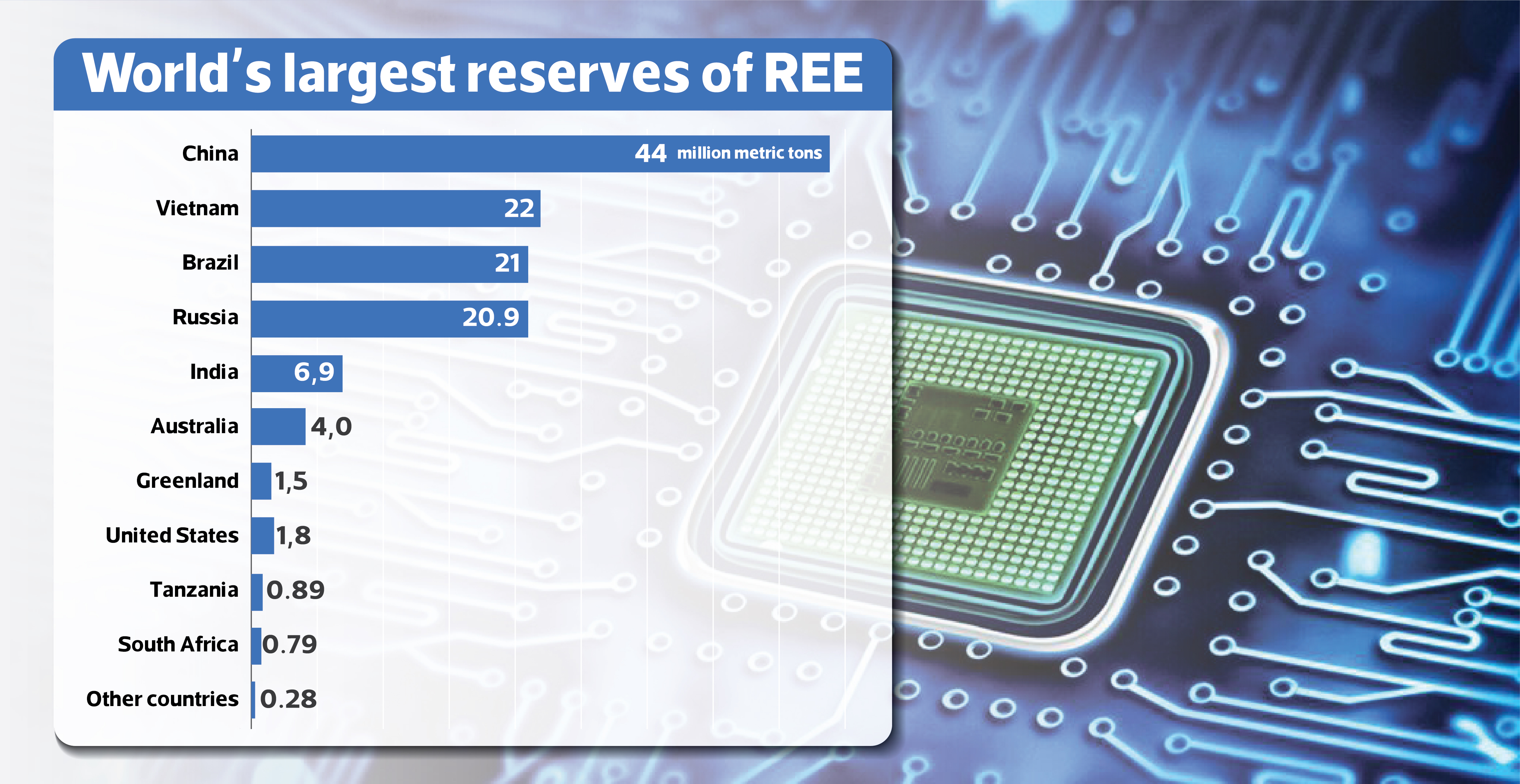
Thus, there is a kind of technological interdependence added to the economic and commercial dependence imposed by the involvement in a globalized international order.
This dependence, with its gains for all as well as its corresponding consequences of armed conflicts and economic rupture, leads to considering the idea of war unlikely as a means of resolving the existing conflict. In this regard, we should question how serious the Chinese Ministry of Defense is concerning the military response to Pelosi’s visit, as well as whether Washington truly supports the establishment of an independent Taiwanese state.
It can be said that both the U.S. administration and the Chinese leadership are dealing with pressing domestic crises that push towards exporting such crises to the external sphere. Chinese President Xi Jinping is interested in exporting the image of power to his party’s grassroots members in anticipation of the fall 2022 elections of the General Secretariat of the Party. He is also interested in this image to distract the grassroots tired of repeating preventive closures to contain the hotbeds of the Corona outbreak. This is in addition to the real estate crisis that hit China Evergrande Group, the country’s second-largest property developer, amid fears of exacerbating it from one sectoral crisis to a nationwide economic catastrophe.
As for the U.S. administration, it is almost certain that the White House did not support Pelosi’s move. But President Joe Biden cannot influence the progressive wing in his party, which Pelosi represents nor can he appear to abandon the “values” pillar in his foreign policy. This is especially true since progressives criticized his July 2022 visit to the Middle East, accusing Biden of favoring the preference of interests over values in U.S. foreign policy.
Similar to the Communist Party in China, midterm elections will be held this fall in the United States amid a wave of inflation and skyrocketing energy costs that are ravaging the purchasing power of the American electorate. These facts are pushing Democrats to look for external balance in order to offer a compensation for the decline in domestic balance.
As for Pelosi’s personality, in addition to her self-esteem as a free progressive woman, she wants to conclude her political career with a remarkable stance on foreign policy. Most estimates suggest that the 82-year-old Pelosi may not run in the next election.
Reinforcing the idea that there is no serious change to the Taiwanese issue is the phone call between Biden and Jinping, which, despite its intensity, did not include any mention of withdrawing from the peaceful application of the principle of "one China with two systems." The Ukrainian crisis forces Washington and Beijing, each according to its own perspective, to act responsibly. Washington is interested in practicing some of Nixon’s policy practices to prevent the cohesion of Sino-Russian relations while Beijing is concerned with not harming its vital scope in Central Asia, which is adjacent to Russian territory.
The Biden administration's easement of Trump administration sanctions on China could provide a way out of the current crisis. This would also serve the Democratic Party because of its role in reducing inflation through low-priced Chinese imports.
In conclusion, Pelosi’s visit may not be a turning point in the course of Sino-U.S. relations, yet the acute circumstances accompanying her visit may be a catalyst for a Chinese military response to create a new normalcy regarding Taiwan in which there is an exchange of rough messages instead of visions and ideas.
What may drive the continuation of the intense atmosphere is the succession of American delegations to Taiwan and the Chinese Ministry of Defense announcement of new live-fire exercises near the midline. With the policies of the major powers normalized with this emerging situation, the escalation exacerbation will be a matter of time unless this sustainable tension is managed through a practical and complete strategic dialogue between the two parties.
In the opposite direction to this dialogue, Beijing suspended military contacts with Washington as well as the work meetings of the defense ministries. It also froze bilateral cooperation in curbing climate change, illegal migration, and drug trafficking. This means that the political crisis is undermining understandings of an international nature on addressing threats to human security, such as climate security, food and water security, and combating organized transnational crime and terrorism.
All of this demonstrates that negative peace—neither war nor cooperation—is developing into a future pattern of U.S.-China relations, casting a shadow over international security and the positive flow of international interactions.
As for the question in the title of this assessment, it is more accurate to follow the hybrid response and monitor Chinese activities in the coming months, especially since the rationality of the Chinese decision prevents the main response from being military in nature pending the accumulation of the Chinese military’s capabilities and the realization of its military modernization plans.

STRATEGIECS Team
Policy Analysis Team
 العربية
العربية